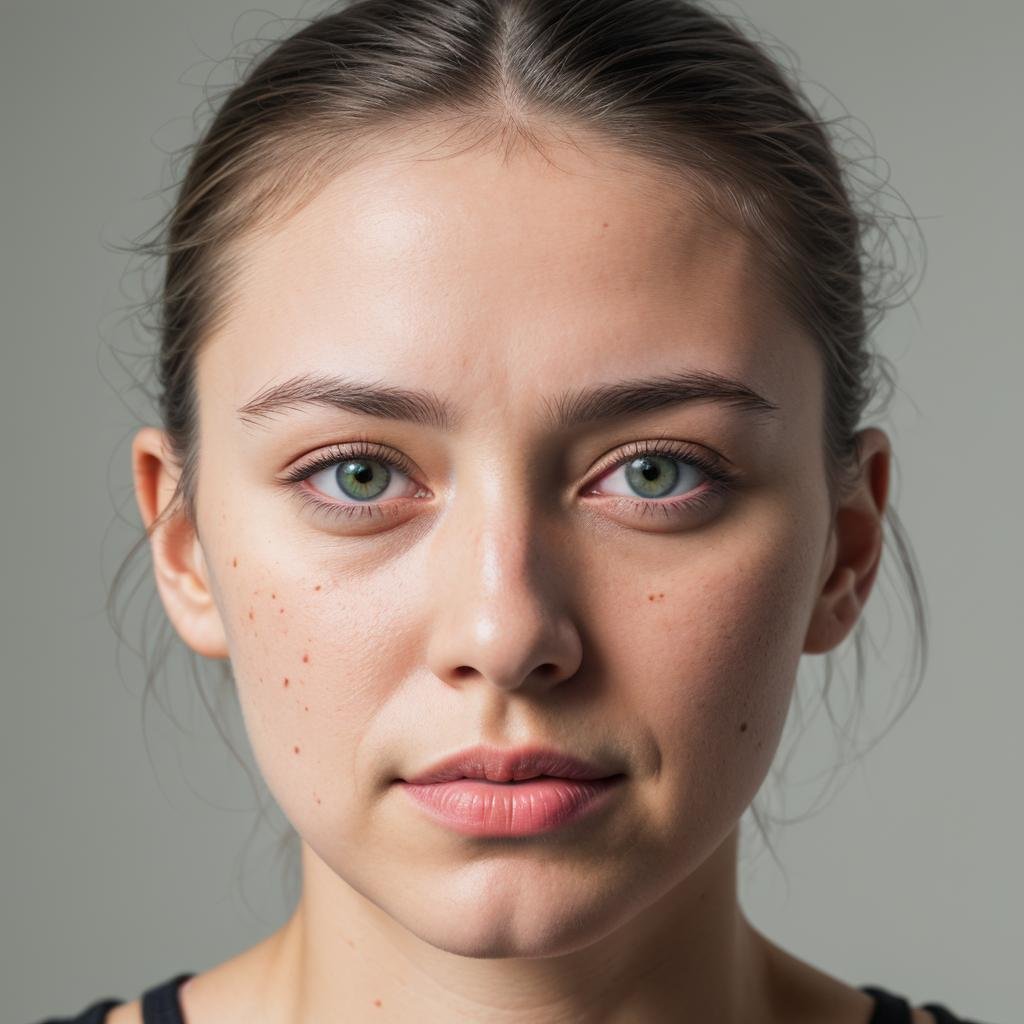Headshot Size and Dimension: What's the Best Ratio?
Joseph West • March, 2024
In a world where your digital image can say a thousand words, mastering the art of the perfect headshot is important. Learn the ins and outs of selecting the right size and dimension to ensure your headshot stands out in a professional landscape.
STUDIO POD
This article clarifies how to choose your headshot's size and dimension, ensuring it adheres to professional standards and enhances your presence. Ready to elevate your headshot to make a lasting impression? Let's make your headshot pop in the crowd!
Image Aspect Ratios and Pixels
First things first, let's talk about aspect ratios and pixels. Aspect ratio refers to the width-to-height proportion of your image, typically expressed as a number like 4:3 or 16:9. Pixels are the tiny building blocks that make up a digital image, and the higher the pixel count, the sharper and clearer your headshot will be.
The Versatile Square: 1:1 Aspect Ratio
This is the most widely used ratio across online platforms like LinkedIn, Facebook, Instagram, and Twitter. It's a safe bet if you want a consistent look and easy cropping for different profile picture sizes.
Pixel Recommendations:
400x400 pixels: Suitable for most online platforms.
600x600 pixels: Offers higher resolution for sharper details.
1000x1000 pixels: Ideal for professional websites or printouts.
The Classic Portrait: 4:5 Aspect Ratio
This ratio is a typical headshot size used for traditional print headshots and is favored by actors and creatives. It offers a more formal feel and allows for showing your shoulders and upper torso.
Pixel Recommendations:
800x1000 pixels: Standard for printed headshots.
1200x1500 pixels: Higher resolution for professional portfolios.
2000x2500 pixels: Excellent for large-format prints.
A Classic Print Choice: 5:7
This ratio offers a timeless portrait feel and is another popular option for printed headshots. It provides slightly more space than the standard 4:5, allowing for a more relaxed pose or showcasing some of your upper body.
Pixel Recommendations:
1000x1400 pixels: Suitable for standard print sizes like 5x7 inches.
1500x2100 pixels: High resolution for larger prints like 8x10 inches.
2000x2800 pixels: Excellent for professional portfolios or poster-sized prints.
The Wide Shot: 2:3 Aspect Ratio
This ratio is less common but gaining popularity for online profiles, especially on platforms like Pinterest or professional networking sites. It allows you to showcase more of your background or environment, creating a more personal feel.
Pixel Recommendations:
600x900 pixels: Suitable for online platforms.
1000x1500 pixels: Good for showcasing your work environment.
1500x2250 pixels: Ideal for high-resolution presentations.
Other Headshot Aspect Ratios
16:9: Mainly used for video conferencing or social media stories.
Custom ratios: Always follow specific requirements for casting calls or agencies.
Remember, sometimes casting calls, agencies, or specific platforms have unique size and ratio requirements. Always prioritize following their exact specifications to ensure your headshot meets their needs.
Headshot Aspect Ratios and Pixel Comparison
Compare headshot aspect ratios, pixel sizes, and standard headshot dimensions with this table:
| Aspect Ratio | Description | Typical Use | Pixel (px) | Approximate Print Size (in) |
|---|---|---|---|---|
| 1:1 (Square) | Versatile, easy cropping | Online profiles (LinkedIn, Facebook, Instagram, Twitter) | 400x400, 600x600, 1000x1000 | 4x4, 6x6, 10x10 |
| 4:5 (Portrait) | Classic, formal | Printed headshots, professional websites | 800x1000, 1200x1500, 2000x2500 | 8x10, 12x15, 20x25 |
| 5:7 (Print) | Timeless, slightly wider | Printed headshots, portfolios | 1000x1400, 1500x2100, 2000x2800 | 5x7, 8x12, 20x28 |
| 2:3 (Wide Shot) | More personal, showing environment | Online profiles (Pinterest, networking sites) | 600x900, 1000x1500, 1500x2250 | 6x9, 10x15, 15x22.5 |
Notes:
Pixel recommendations are minimums for good quality. Higher resolutions offer sharper images.
Approximate print sizes are based on 300dpi resolution.
Always prioritize specific size and ratio requirements for platforms or agencies.
What Size Should A Headshot Be on Different Platforms
Now that you understand the basics of aspect ratios and pixels, let's delve deeper into choosing the perfect size of a headshot for your specific needs. Remember, there's no one-size-fits-all approach, so consider the following factors:
LinkedIn: 400x400 pixels, square aspect ratio (1:1)
Facebook: 170x170 pixels, square aspect ratio (1:1)
Instagram: 1080x1080 pixels, square aspect ratio (1:1) or profile picture 300x300 pixels (1:1)
Twitter: 400x400 pixels, square aspect ratio (1:1)
Professional Website/Portfolio: Check your platform's specific guidelines. Some may have unique size requirements.
Print Headshots: Consider how you plan to use them. If framed, choose a headshot standard size like 5x7 inches or 8x10 inches and a corresponding ratio like 4:5 (classic portrait) or 5:7 (slightly wider portrait).
Casting Calls/Agencies: Always prioritize their exact specifications, which may differ from standard headshot sizes.
Best Headshot Size for Various Occupations
While a well-crafted headshot is crucial for everyone in today's digital world, specific occupations might benefit from tailoring their picture size and style to align with their field.
Actors: 8"x10" (4:5 or 5:7) is the industry standard, crucial for casting and auditions, highlighting facial features and expressions clearly.
Designers, Artists: Square (1:1) for online portfolios, 5:7 or 8x10 for printed submissions. Highlight creativity and individuality.
Business Professionals: Flexible sizes are acceptable, though quality and clarity should be prioritized for LinkedIn and corporate websites. Square (1:1) for online profiles, 4:5 for professional websites.
Engineers, IT Professionals: Square (1:1) for online profiles, 4:5 for printed resumes.
Doctors, Healthcare: Standard 4:5 portrait for printed materials, square (1:1) for online profiles.
Sales, Marketing: Friendly and approachable square (1:1) for online profiles, 4:5 for professional websites.
Teachers, Coaches: Square (1:1) for online profiles, 5:7 for printed brochures.
How Should Headshots Be Cropped?
Cropping your headshot might seem like a minor detail, but it can make a big difference in the impression you create. Headshots should be strategically cropped to highlight the subject's face, typically from the chest up.
Focus on the eyes: Ensure eyes are centered and visible. Aim for the top third of the frame for online profiles and slightly lower for printed headshots.
Show enough space: Don't cut off your head or shoulders awkwardly. Leave some breathing room, especially on the sides and top. For print headshots, include some upper torso.
Follow the platform's rules: Some platforms have specific size and cropping requirements. Check their guidelines before uploading your headshot.
Consider the composition: Think about the "Rule of Thirds" for a balanced look. Imagine dividing the image into thirds horizontally and vertically and place your eyes on one of the intersection points.
Follow Industry Standards: Adhering to the specific requirements of your field (like the 8"x10" size for actors) ensures your headshot meets professional expectations and norms.
Programs to Crop and Edit the Headshot
Cropping your headshot is the final brushstroke, shaping your professional image. But where to start?
Mac Users
Open your headshot in the "Preview" app.
Switch to "Rectangular selection" mode (cursor turns into a crosshair).
Click and drag to select your desired area, with dimensions displayed in the bottom right corner.
Head to the "Tools" menu and choose "Crop" or simply hit "Command+K".
Windows Users
Open your image in the classic "Paint" app.
Under the "Home" tab, find "Select" and choose your desired area.
Click "Crop" in the same "Image" group to finalize your selection.
Choose "Save As..." to create a new cropped version, preserving the original.
Studio Pod: A Convenient Option for Headshots
If the thought of mastering lighting, angles, and self-cropping for your headshot makes you overwhelmed, the Studio Pod is your answer. The studio's high-def camera captures multiple perfect shots for you to choose your best self. Forget scheduling appointments, studio fees, and privacy concerns; the Pod empowers you with convenience, control, and stunning results – all on your own terms.
Should Your Name Be on Your Headshot?
FAQs on Headshot Dimensions
The decision of whether to include your name on your headshot hinges on its purpose and intended audience. For printed headshots, actors and performers rely on their name to be recognized by casting directors, so, yes, their headshot should have a name. In the digital realm, with your name already displayed on most platforms, online profiles generally don't require additional identification on the headshot itself.
Should My Headshot Be Matte or Glossy?
The choice between matte or glossy finishes for your headshot is a matter of personal preference and industry standards. Matte finishes are less reflective and often preferred for actor headshots to avoid glare under harsh lighting. Glossy finishes can make colors pop and are sometimes favored for corporate or modeling headshots.
Headshots are traditionally vertical, focusing on the face and shoulders to capture the subject's essence and personality. This format is preferred for its ability to highlight the individual's features in a close-up, making it ideal for personal branding, acting, and professional profiles. Horizontal headshots are less common and may be used for creative or editorial purposes where more background or context is desired.
Should I Do a Vertical or Horizontal Headshot?

Joseph West, a co-founder of Studio Pod, leverages his extensive experience in photography to provide professional headshot services. Through Studio Pod, he shares his insights and expertise in the photography industry, underscoring his commitment to the photography industry.







